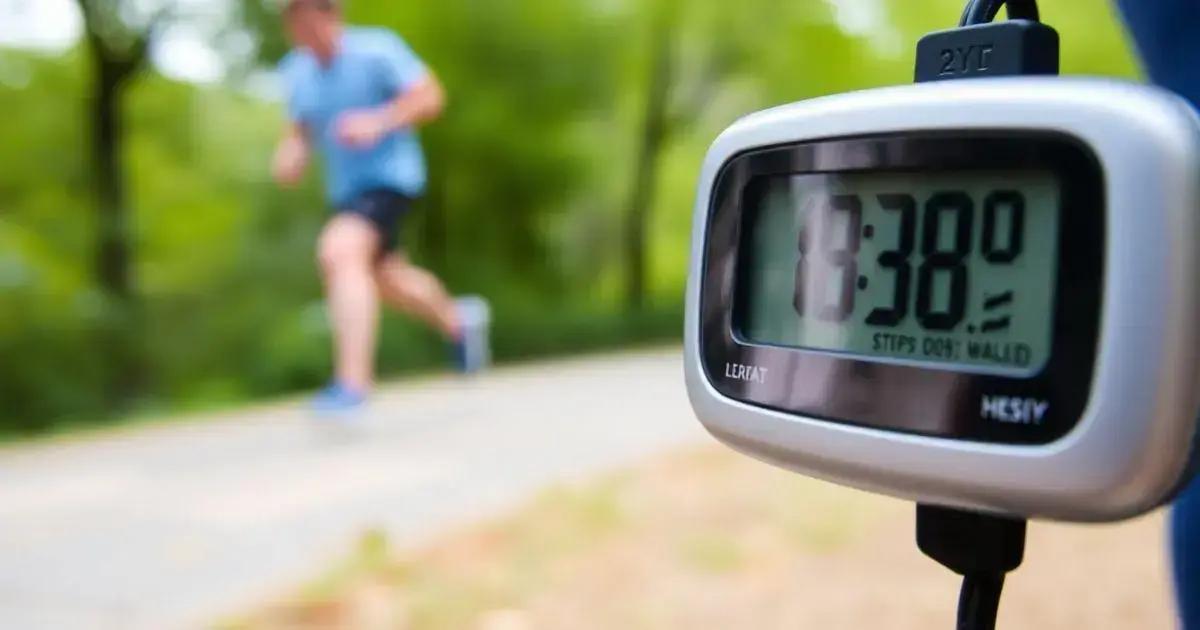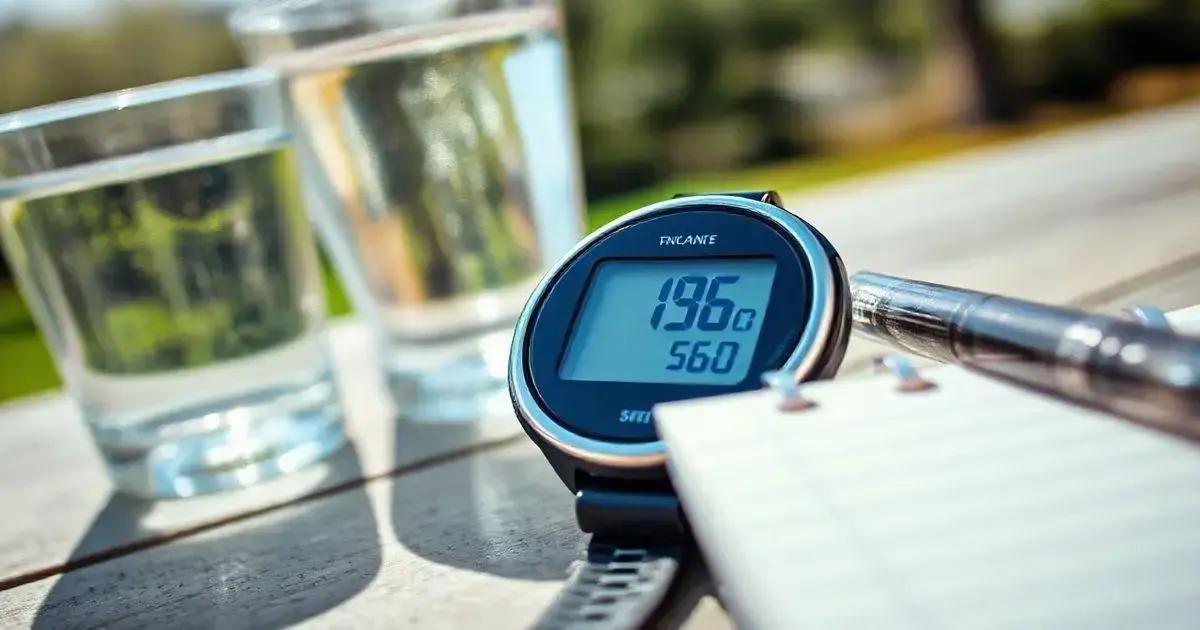Learn how to use pedometers to effectively track your activity levels by understanding their functionality, setting achievable goals, and following practical tips to maximize their effectiveness, helping you lead a more active and healthier lifestyle.
If you’re looking to monitor your daily activity levels, understanding how to use pedometers is essential. Pedometers can assist in tracking how many steps you take, encouraging you to stay active and promoting a healthier lifestyle. In this article, we will discuss the functionality of pedometers, their benefits, and how to set achievable goals. Join us as we explore practical tips to maximize your pedometer’s effectiveness.
Understanding Pedometers and Their Functionality

Pedometers are devices that help track physical activity, specifically your steps taken throughout the day. Understanding how they work is crucial for anyone looking to improve their fitness levels. Most pedometers use internal sensors to detect movement. When you walk or run, these sensors measure your motion and convert it into data that shows how many steps you have taken.
Types of Pedometers
There are several types of pedometers available on the market today:
- Mechanical Pedometers: These are simple devices that track steps using a spring and gear system. They are generally less expensive.
- Electronic Pedometers: These use microchips and are more accurate compared to mechanical ones. They can often count distance and calories burned as well.
- Smartphone Apps: Many smartphones come with built-in pedometers, or you can download apps that track your steps and provide additional features like GPS tracking.
How Pedometers Calculate Steps
Pedometers typically use a pendulum mechanism or an accelerometer to measure step movement. The number of steps is calculated based on your stride length, which varies from person to person. You can often adjust your settings to enter your stride length for more accurate readings.
Additional Features
Many modern pedometers come equipped with extra features, which enhance their functionality. Some of these features include:
- Calorie Tracking: This feature estimates the number of calories burned based on the steps taken.
- Distance Measurement: Some pedometers measure how far you’ve walked or run during the day.
- Daily Goals: Setting daily goals can motivate you to reach specific activity levels.
In summary, understanding pedometers and their functionality can greatly enhance your ability to monitor your health and fitness. Choosing the right type of pedometer that fits your lifestyle will help you stay on track and achieve your activity goals.
Benefits of Using a Pedometer for Activity Tracking
![]()
Using a pedometer for activity tracking offers several benefits that can help improve your health and fitness. One major advantage is that it provides a real-time count of your steps. This can motivate you to become more active throughout the day. Seeing your progress visually can push you to take the stairs instead of the elevator or walk instead of driving short distances.
Encouragement to Move More
Knowing how many steps you’ve taken can inspire you to reach daily goals. Many experts recommend aiming for 10,000 steps per day. A pedometer makes it easy to track this target and even offers motivation to exceed it.
Accountability
Pedometers promote accountability in your daily routine. When you can quickly check your stats, you’ll be more likely to stick to your activity goals. Sharing your results with friends or family can add social accountability, making it easier to stay committed.
Improved Health Awareness
By tracking your activity, you can become more aware of your health. You may discover patterns in your routine that show when you sit too much or when you are more active. This information can help you make conscious choices to improve your overall health.
Weight Management
Regular activity tracking can help with weight management. Using a pedometer can help you monitor the calories you burn. When combined with a healthy diet, this can aid in achieving weight loss or maintenance goals.
Enhanced Fitness Levels
As you become more active, your fitness levels improve. By regularly tracking your steps, you can gradually increase your daily activity. Over time, you will likely notice improvements in your stamina and energy levels. This positive feedback can encourage you to keep moving.
In conclusion, the benefits of using a pedometer for activity tracking are numerous and can lead to a more active and healthier lifestyle. Incorporate one into your daily routine and see the difference it can make.
Setting Goals with Your Pedometer

Setting goals with your pedometer can help keep you motivated and focused on your activity levels. It is essential to track not only how many steps you take, but also to challenge yourself to achieve new targets. Here are some tips for setting effective goals:
Start with a Baseline
Before setting your goals, first determine your baseline activity level. Use your pedometer for about a week to find out how many steps you take on average each day. This information provides a starting point for setting realistic goals.
SMART Goals
When establishing goals, aim for SMART criteria:
- Specific: Clearly define what you want to achieve. For example, increase your steps by 2,000 per day.
- Measurable: Ensure your goal can be tracked. Use your pedometer to see day-to-day progress.
- Achievable: Set realistic targets based on your baseline. Avoid overwhelming yourself.
- Relevant: Choose goals that align with your overall health and fitness objectives.
- Time-bound: Set a deadline for reaching your goal. This could be weekly or monthly.
Gradual Progression
As your fitness levels improve, gradually increase your goals. This approach allows your body to adjust to changes while helping you avoid injury. A good starting point is to raise your step count by around 10% each week.
Incorporate Variety
Mix things up by adding different activities to your routine. For instance, if you notice you’re reaching your step goal easily, try incorporating jogging, biking, or hiking. These activities can keep your workouts interesting and help reach higher goals.
Track Your Progress
Regularly check your progress on the pedometer. This will provide valuable feedback and keep you accountable. Sharing your achievements with friends or through social media can also enhance motivation.
By utilizing these strategies, setting and achieving goals with your pedometer becomes an engaging and rewarding experience, paving the way for a more active lifestyle.
Tips for Maximizing Pedometer Effectiveness

To get the most out of your pedometer, following some practical tips can significantly help improve its effectiveness. Here are some strategies:
Choose the Right Pedometer
Select a pedometer that matches your lifestyle. There are different types, such as simple step counters, digital versions with added features, and smartphone apps. Make sure to pick one that is easy to use and gives you the data you want.
Wear It Correctly
For accurate tracking, always wear your pedometer correctly. If it’s a clip-on type, attach it to your waistband or belt. If it’s a wristband or watch, ensure it fits snugly on your wrist. Correct placement is key for reliable measurements.
Set Daily Goals
Incorporate daily step goals into your routine. Start with a realistic number and gradually increase it as you become more active. Adjusting your goals helps keep you engaged and motivated.
Sync Regularly
If your pedometer can sync with your smartphone or computer, do it regularly. Keeping your data updated can help you track progress over time and maintain your motivation. Analyze patterns to see where you can improve.
Utilize Different Activities
To maximize your step count, incorporate various activities into your routine. Walking, hiking, dancing, or cycling can all contribute to increased activity levels. More variety leads to better results and keeps things interesting.
Track Your Progress Over Time
Monitor your progress on a weekly or monthly basis. Use a journal or a fitness app to note how many steps you have taken each day. This practice will help you identify trends and celebrate your achievements.
Stay Hydrated and Take Breaks
Don’t forget to keep yourself hydrated and take regular breaks during your activity. Feeling good physically allows you to walk more and stay active for longer periods. Always listen to your body and adjust as needed.
By following these tips, you will maximize the effectiveness of your pedometer and take significant steps towards a healthier lifestyle.
In Conclusion: Embrace the Power of Pedometers
Using a pedometer to track your activity levels can greatly enhance your journey towards a healthier lifestyle. By understanding their functionality, recognizing the benefits, setting achievable goals, and implementing effective strategies, you can make the most of this simple yet powerful tool.
Each step you take brings you closer to your fitness objectives. Remember to keep challenging yourself while enjoying the process. With consistent effort and the right mindset, you will not only improve your physical health but also boost your overall well-being.
So, strap on that pedometer and take the first step towards a more active and vibrant life!
FAQ – Frequently Asked Questions about Using Pedometers to Track Activity Levels
What is a pedometer and how does it work?
A pedometer is a device that counts your steps. It uses motion sensors to detect movement and provides you with data on your daily activities.
What are the benefits of using a pedometer?
Using a pedometer can increase your motivation to stay active, help you set and achieve fitness goals, and raise your awareness of your daily activity levels.
How do I set goals with my pedometer?
Start by determining your average daily steps, then set realistic incremental goals. Use SMART criteria to define specific, measurable, achievable, relevant, and time-bound objectives.
How should I wear my pedometer for accurate tracking?
Wear your pedometer on your waistband, belt, or wrist, depending on the type. Make sure it fits securely, so it accurately measures your movements.
Can I use my smartphone as a pedometer?
Yes, many smartphones come with built-in pedometer features, or you can download fitness tracking apps to monitor your activity levels.
How can I maximize the effectiveness of my pedometer?
To maximize effectiveness, choose the right pedometer, wear it correctly, set daily goals, sync your activity data, and regularly track your progress.












